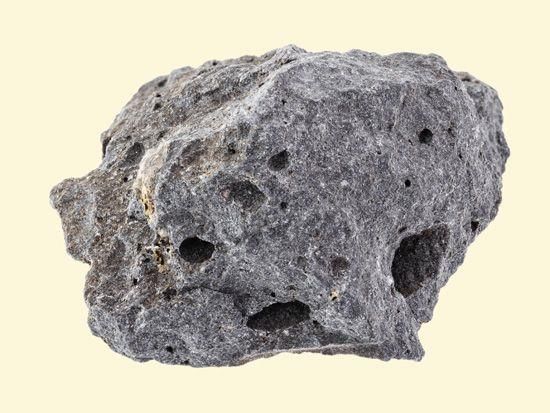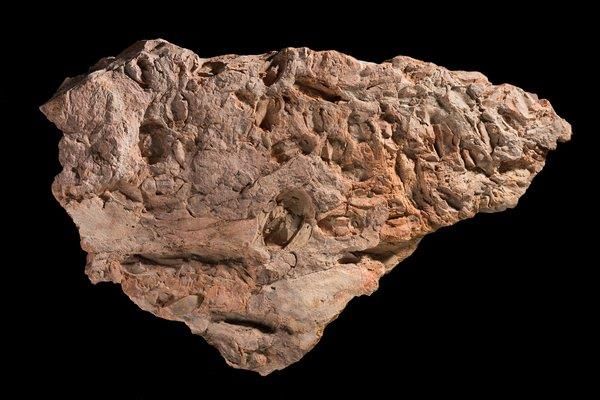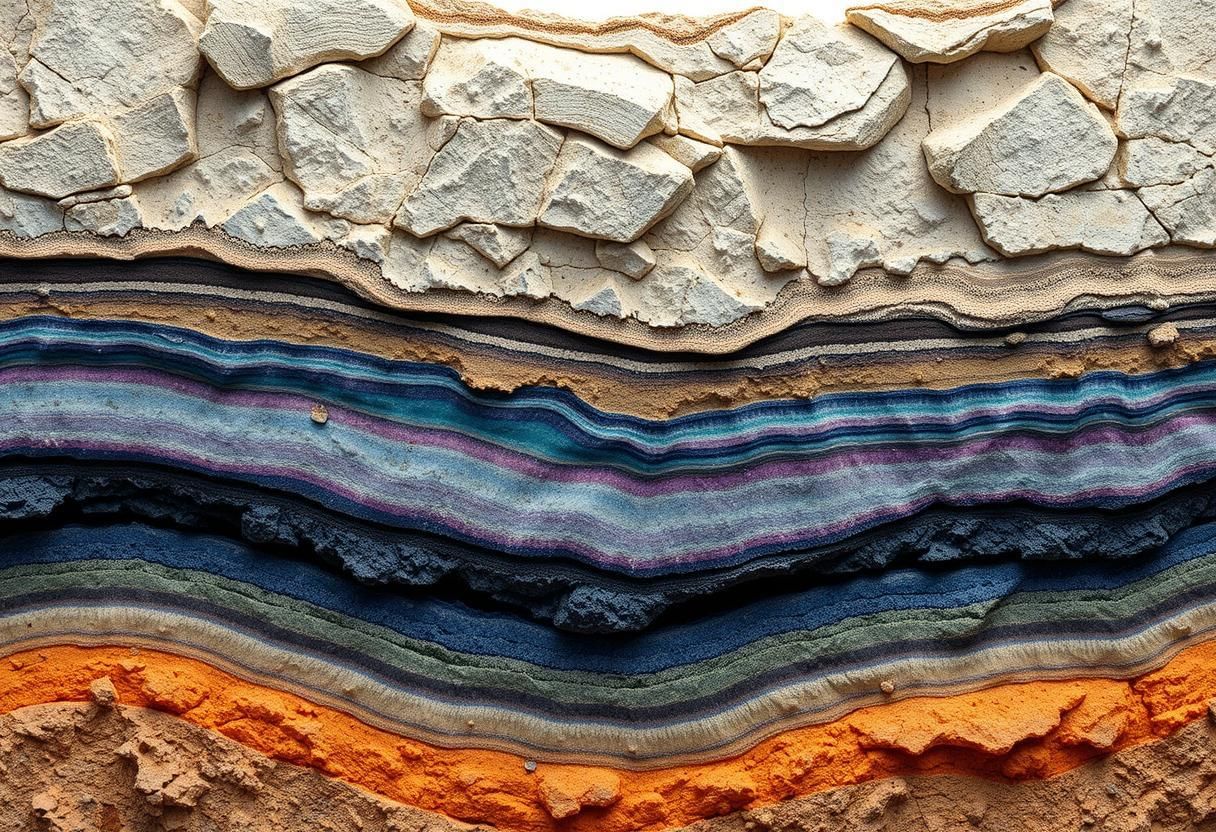Rocks, The Rock Cycle and Soil Chapter Notes | Science Olympiad Class 6 PDF Download
| Table of contents |

|
| Igneous Rocks |

|
| Sedimentary Rocks and Fossils |

|
| Metamorphic Rocks and the Rock Cycle |

|
| Soil |

|
Igneous Rocks

What Are Igneous Rocks?
- The term "igneous" comes from the Latin word for fire. Igneous rocks are formed from magma that has cooled and solidified. Magma is extremely hot, just like fire.
- When magma rises from deep within the Earth’s mantle and cools, it undergoes a process called solidification, turning into solid rock.
Intrusive Igneous Rocks
- Some magma cools and solidifies slowly inside the Earth’s crust. This process creates intrusive igneous rocks.
- Intrusive means these rocks form inside the Earth.
- An example of an intrusive igneous rock is granite. Over time, as the rocks above granite wear away, this granite can be exposed at the surface.
Extrusive Igneous Rocks
- Other magma reaches the Earth’s surface, where it is called lava. When lava cools, it solidifies into extrusive igneous rocks.
- Extrusive means these rocks form on the surface of the Earth.
- An example of an extrusive igneous rock is basalt, which forms when lava cools quickly on the surface.
What are igneous rocks made of?
- Igneous rocks are composed of minerals, which are made up of various substances. The most common substances in the Earth's crust are silica, oxygen, aluminium, magnesium, and iron. These substances combine in different ways to form minerals.
- A key feature of all igneous rocks is that they are crystalline, meaning they are made up of crystals formed when minerals cool down. For instance, quartz is a mineral made of silica and oxygen, and its crystals are visible when the mineral cools and forms solid crystals.
- When magma is deep beneath the Earth's surface, it cools slowly, allowing large crystals to form. These crystals are big enough to be seen with the naked eye, but because they are close together, they don’t form distinct shapes like individual crystals. This is why rocks like granite, which contains quartz, feldspar, and mica, have different colors due to the presence of different crystals.
- In contrast, when lava cools quickly, as on the Earth's surface, it forms extrusive igneous rocks with small, barely visible crystals, such as in basalt.
Sedimentary Rocks and Fossils

What are Sedimentary Rocks?
- Sedimentary rocks are formed from the accumulation and cementation of small particles of other rocks, known as sediments.
Where Do the Sediments Come From?
- Rocks are constantly being broken down into smaller pieces through a process called weathering. This can happen in several ways:
- Temperature Changes: Extreme temperatures can cause rocks to crack and break apart.
- Water: Rainwater can dissolve certain types of rocks, making them easier to break down.
- Plants: The roots of plants can penetrate and break the surface of rocks, contributing to their weathering.
Erosion and Transportation
- Once rocks are weakened by weathering, they are eroded by natural forces such as rivers, ice, and wind.
- Rivers play a significant role in this process by carrying the broken-down rocks, which are now in the form of sediments.
Sedimentation
- When river water reaches slower-moving bodies of water, like seas or lakes, it loses the energy to carry the sediments.
- As a result, these sediments are deposited, marking the beginning of the sedimentary rock formation process.
Formation of Sedimentary Rock
- Over millions of years, the layers of sediments at the bottom are compressed by the weight of the layers above them.
- Minerals present in the water help to bind these sediments together, forming solid sedimentary rock.
Characteristics of Sedimentary Rocks
- One of the key features of sedimentary rocks is that they always form in layers. This layering is a result of the gradual accumulation and compression of sediments over time.
Types of Sedimentary Rock
Sandstone
- Sandstone is a type of sedimentary rock formed from sand grains that are cemented together.
- Most of the sand in sandstone is made up of quartz, a very hard mineral that resists weathering.
- Sandstone can come in various colors, including red, orange, yellow, and grey.
Shale
- Shale is composed of very fine-grained sediments that are smaller and softer than sand grains.
- It is typically grey in color and can be scratched easily, leaving a mark.
- Shale is often soft enough to break with hand pressure and also shows distinct layering.
Limestone
- Limestone is formed from layers of shells that cover the remains of sea animals that died and sank to the ocean floor.
- It is usually white or grey in color, with chalk being a pure form of limestone.
Fossils
Fossils are another feature that can be found in some sedimentary rocks. They are the preserved remains of ancient animals and plants that have been buried in sediment over a long period of time.
How Fossils Form?
- For a fossil to form, the remains of an animal or plant must be buried quickly in a place with very little air. This is why fossils are typically found in sedimentary rocks that form under water, such as on the sea floor or lake bed.
- When animals that live in or near the sea die, their bodies are often washed into the water. The soft parts of the animal decay, and over time, minerals in the water replace the bones, turning them into rock. This process creates a fossil, like the dinosaur fossil shown in the photograph, which was found in limestone and is estimated to be about 150 million years old.
- Sometimes, only the imprint of an animal is left in the sediment, creating what is known as a mould. For example, a dinosaur footprint mould found in sandstone in Namibia is also around 150 million years old. Another example is a leaf mould found in shale that is 350 million years old.
- In some cases, a mould can be filled with minerals that harden, creating a cast of the animal. The photograph below shows two ammonite fossils in limestone, where the moulds were filled with minerals that hardened to form the shape of the original animal. Ammonites lived around 240 million years ago, making these fossils very old.
Metamorphic Rocks and the Rock Cycle
 Metamorphic Formation
Metamorphic Formation
What are Metamorphic Rocks?
Metamorphic rocks are rocks that have undergone a process of change. The term 'metamorphosis' means 'change,' and it reflects how these rocks are transformed from their original state. There are different ways in which metamorphic rocks can be formed:
- Change by Heat: When rocks are subjected to high temperatures, all the minerals within the rock can melt and then re-form into new crystals. This process creates a metamorphic rock with a different mineral composition and structure.
- Change by Pressure: Sometimes, rocks are changed by immense pressure. This pressure can squeeze the rocks so tightly that the new rock ends up with many thin layers. The intense pressure alters the rock's structure and appearance.
- Change by Heat and Pressure Together: In some cases, rocks are changed by both heat and pressure at the same time. This combination results in a new rock with different minerals and a layered structure. The heat and pressure work together to create a unique metamorphic rock.
What leads to the formation of heat and pressure?
The illustration below depicts layers of sedimentary rocks buried beneath the Earth's surface. When magma rises from the mantle and forms an intrusive igneous rock mass, it exerts immense heat and pressure on the surrounding rocks. Imagine the scenario: a massive body of extremely hot liquid rock pushing solid rocks aside. This process generates heat and pressure, transforming the surrounding rocks into metamorphic rocks.
